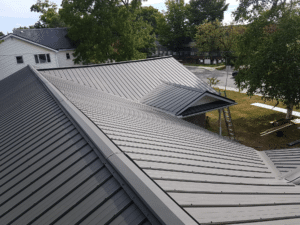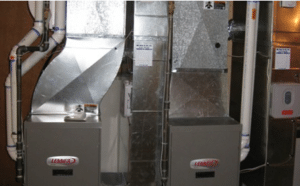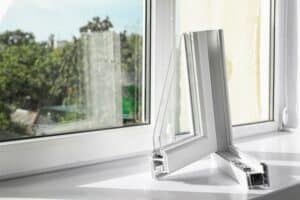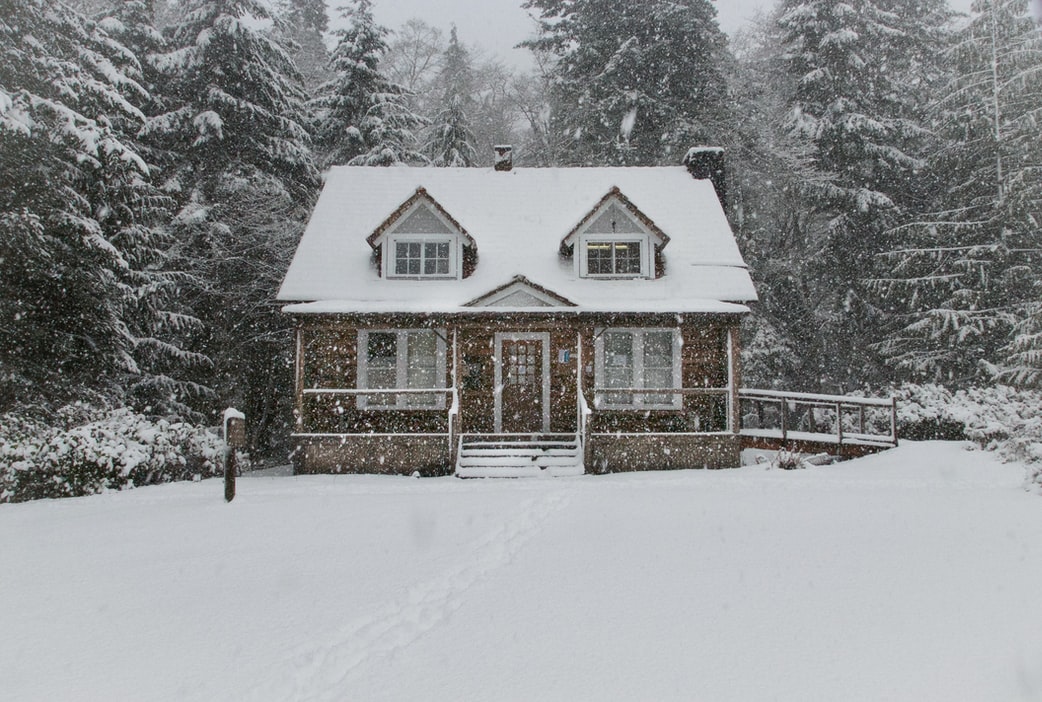
Winter is well on its way, and now is the time to prepare your home for the harsh conditions it will bring with it. Investing in maintenance, properly storing summer items, and taking care of small repair projects can reduce the risk of damage and the need for expensive repairs down the road.
We have put together a winter maintenance checklist covering jobs to do both inside and outside of the home. Fall is the perfect time to tackle this home maintenance checklist, as many tasks on the list will be difficult in cold temperatures and deep snow.
Table of Contents
ToggleExterior Winter Home Maintenance Checklist
Protecting your home from winter begins with your home’s exterior. Here is the exterior winter checklist:
Clean out the gutters
Leaves, sticks, and other debris can cause your gutters to clog. When the snow melts, the gutters can overflow, and water will start pooling around the foundation of your house. Eventually, the water will find a way into your basement. Carefully climb a ladder to clean out the gutters. Then make sure your downspouts are in good shape and lead the water at least 10 feet from the house.
Make sure your eavestroughs are in good condition and attached to the side of the roof correctly. If they are damaged or need replacing, contact an eavestrough company before the snow accumulates.
Drain and store hoses
Drain the water out of your garden hoses, remove them from faucets, and store them in the shed or garage. Then go inside and turn off the water supply to those exterior faucets. If left on, water can freeze and damage the pipes.
Shut down your sprinkler system
If your yard has a sprinkler or irrigation system, it’s time to drain and shut that down. Water left in the system will freeze and cause the pipes and hoses to crack. You can hire a property maintenance company to do this for you. You can also learn how to winterize a sprinkler system yourself to save money. You should also winterize any water features like fountains, waterfalls, or ponds.
Winterize your swimming pool
If you have an outdoor pool, remove debris from the water and drain it partially. You can buy a winter treatment kit to prevent damage over the winter. It would help if you also covered the pool to keep out debris. Properly store all other pool maintenance equipment, such as pool toys like noodles, floating toys, and life jackets.
Have the roof inspected
Most professional roofers will offer roof inspection services. If you’re comfortable on a ladder, there are some things you can look for yourself. Check the shingles for any apparent damage like curling, peeling, or missing shingles. Inspect the flashing around your chimney and vents and make sure it’s securely fastened. You can also pop your head in the attic and look for any signs of water getting in. If you see an issue, contact a roof repair company before the snow flies.
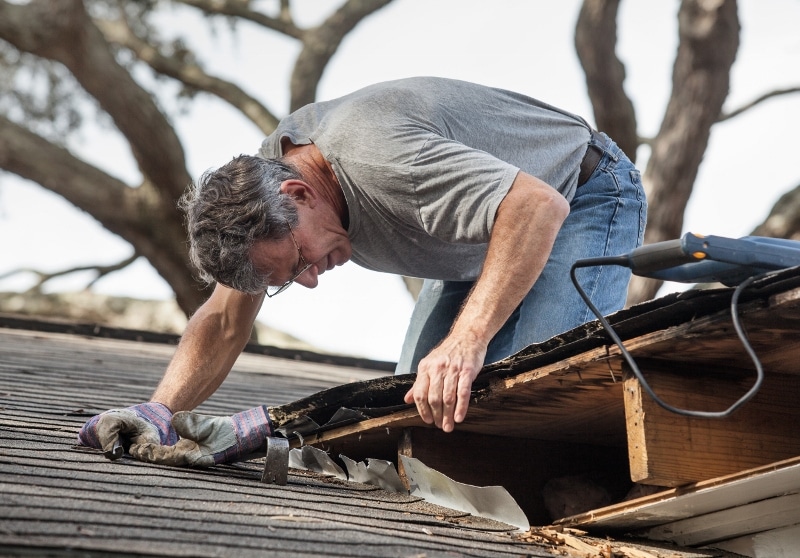
Winterize gas-operated yard equipment
Gas-fueled yard equipment like lawnmowers, weed trimmers and chain saws need to be prepared for winter too. If they still have fuel in them, use a fuel stabilizer to help preserve the gas until the spring. Otherwise, drain the gas and dispose of it at your local eco-centre. Either of these actions will help extend the lifespan of your equipment. Once done, safely store your equipment and tools in the shed or garage.
Inspect low hanging tree branches
If you have tree branches hanging over your home, garage, shed, or powerlines, you should have an arborist trim those limbs before winter. If it’s a large branch or even a small one from an evergreen tree, snow can accumulate on the branches and cause them to come down. Falling branches can damage to your property and power lines.
Check the deck
Unless you live on the west coast, snow and ice will accumulate on your deck for several months this winter. Now is the time to prepare the deck for that. First, store your patio furniture and clear the deck of anything that will get damaged in winter weather. You should also clean and store your barbeque if you’re not planning on using it during the winter. Then wash it, sweep debris, check for and repair rotten boards now.
Winterize the air conditioning unit
Proper air conditioner maintenance will extend your AC unit’s lifespan and allow it to perform most efficiently. First, clear all debris like leaves and sticks from around the unit. Disconnect it from power, so it doesn’t try to start up in the winter. Invest in a protective cover for the AC unit to keep ice and snow off of it.
Check the exterior for potential air leaks
Air leaks are a significant culprit for heat escaping from your home and increased energy bills. Take a walk around your house and check the exterior seals on all your windows and doors. If you find cracked or missing caulking, remove it and recaulk that area. Also, check for gaps around faucets, vents, or anything else that penetrates the wall. If you find holes in the wall, you should fill them with steel wool and caulking to prevent pests like mice from making a home in your house this winter.
Get the snowblower ready
If you haven’t already, have your snowblower serviced and make sure it starts properly. DIY maintenance might mean giving it an oil change and new spark plugs, so it runs well this winter. Get out other equipment you’ll need like snow shovels, gravel, or salt. Snow waits for no one, so you want to make sure it’s prepared to get to work this winter.
Alternatively, you can arrange for snow removal services. Save yourself the effort, time, and backache and allow a professional snow removal company to take care of your driveway and walkways for you. These companies can book up fast, so if this sounds like the best option for snow removal this winter, make the phone call soon.
Interior Winter Home Maintenance Checklist
Now let’s move to the inside of the house. Part of your winter checklist should include an inspection of mechanical systems, insulation, windows and doors, and smoke and carbon monoxide detectors.
Have the furnace tuned up
Annual furnace maintenance is essential to the performance and longevity of your HVAC system. Each fall, have your furnace inspected and tuned up by a professional heating and cooling company. They will run it through a multi-point inspection, clean things up, make minor repairs, change your furnace filter, and ensure everything is in top shape for the winter ahead. Regular furnace maintenance will ensure your HVAC runs at peak performance and efficiency and will also ensure it’s running safely.
Regular maintenance will also prevent significant breakdowns or the need for a premature replacement. The harder your furnace has to work, the more strain it experiences, the shorter it’s lifespan. The last thing you want is for the furnace to quit in the middle of a cold winter’s night.
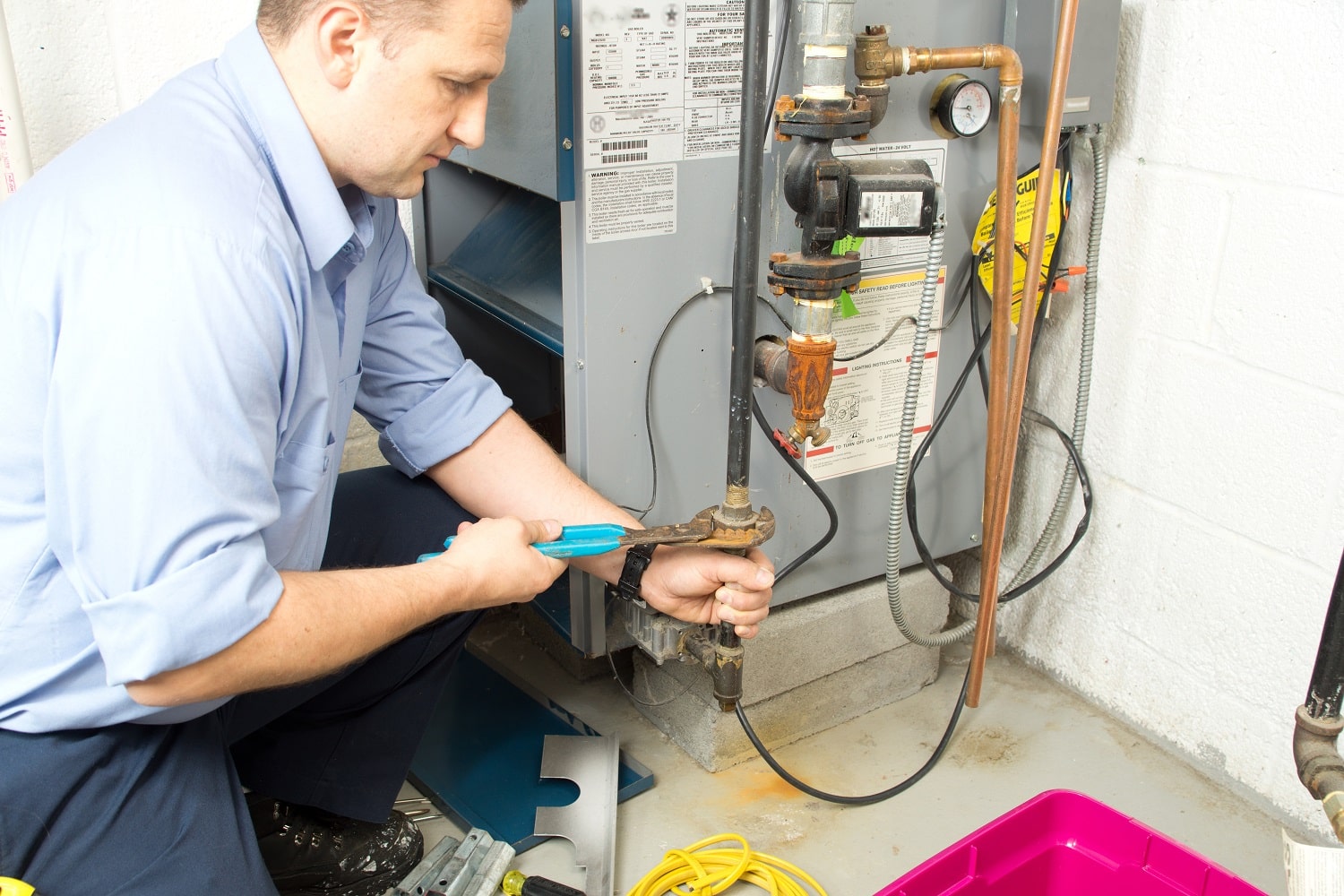
Call for a natural gas inspection
While you’re having the furnace inspected, arrange for an inspection of your natural gas lines and appliances. Your local natural gas provider will often offer this inspection service free-of-charge. They’ll check things like the furnace, hot water heater, gas fireplace, gas range, and other appliances for noticeable issues and carbon monoxide leaks. A gas inspection will ensure your home is safe and give you peace of mind as you enter the colder months.
Inspect and clean the fireplace and chimney
You shouldn’t use your wood-burning fireplace or wood stove this winter without inspecting and cleaning it first. Over the summer, debris could have gotten in the chimney. Sometimes birds or squirrels will make a nest in the chimney, which can be a major fire hazard. A professional chimney sweep will clear it of all debris, including last year’s soot, nests, and leaves. Not only will this reduce the risk of a fire, but it can also reduce the risk of dangerous gases getting into your indoor air.
Once that is done, start stocking up on firewood. Try to store firewood in a dry place that is not directly against the house. If the wood you brought in has carpenter ants or other pests, you don’t want them moving from the woodpile to your walls.
Check windows and doors for leaks
You’ve already done an exterior check for leaks on your windows and doors. Now it’s time to check the interior. A drafty window can make up for nearly 30% of energy loss in the home. If your windows are noticeably damaged, you might need a replacement. Otherwise, recaulking the interior seals and replacing damaged weather stripping could be enough to seal any leaks.
If you have older windows and a replacement isn’t in the budget this year, consider covering them with plastic. While it’s not ideal visually, this DIY task can help reduce drafts and will keep your heating bills manageable as the temperature drops.
Replace batteries on smoke and CO detectors
The change of seasons is a great time to inspect your smoke detectors and carbon monoxide detectors. Swap out the old batteries for new ones, and run a test. If there are any issues, replace the detector immediately.
Smoke detectors need to be on each floor of the home, and usually near the kitchen. Carbon monoxide detectors should be in or near the bedrooms and on every floor of the house. Because the windows are closed in the winter and you use stoves and fireplaces more often, it’s vital to ensure your carbon monoxide detectors are in good working order.
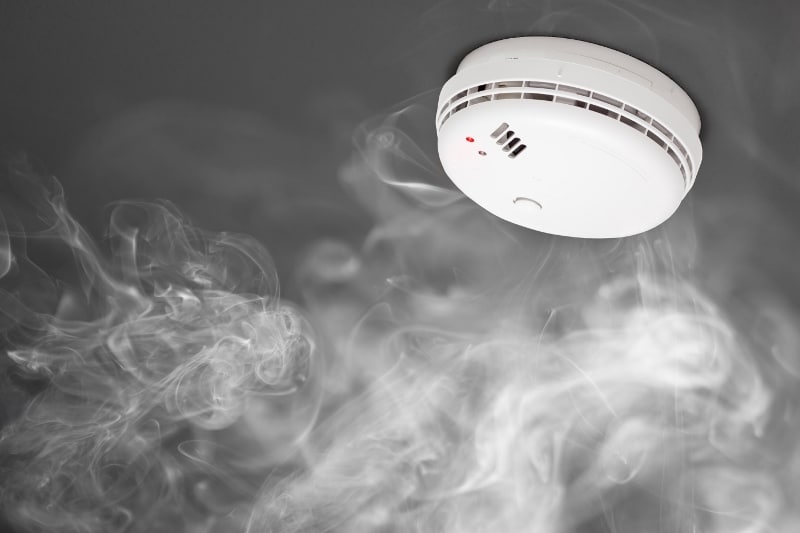
Inspect attic insulation and ventilation
Attic insulation and proper ventilation play an essential role in stopping heat escape and preventing condensation in the attic. Without ventilation, the cold air will condense, accumulate, freeze, and cause attic rain when it thaws. This kind of moisture can damage your insulation, framing, ceiling and promote mould and mildew growth.
Improper ventilation and insulation can also cause ice dams. Ice dams occur when the heat from the home’s interior goes into the attic, then escapes through the roof. It warms up the roof and causes the bottom layer of snow to melt and freeze again. Over the winter, you can end up with a thick sheet of ice hanging off your roof. Ice dams can cause significant damage to your roof and are a safety hazard if they fall.
If you need an insulation upgrade, now is a good time to do that. Most insulation contractors will also inspect your ventilation system to ensure adequate airflow up there. Otherwise, check the insulation around your interior attic hatch. Make sure there are no gaps in insulation to keep that warm air from escaping into the attic.
Inspect your plumbing to prevent pipes from freezing
Water expands when it freezes, and frozen pipes can burst and lead to all kinds of expensive water damage problems. Inspect the accessible pipes on your exterior walls, especially in the basement or crawlspace, and insulate them if they are not already. If you plan on going away this winter, keep the heat up to ensure the pipes are kept warm.
If you are going away, have someone check on your home every other day to ensure everything is okay. Frozen and burst pipes are not covered under most home insurance policies if no one checks on your home. Typically, an insurance policy will require a check every 2-3 days while you’re away.
Get the humidifier ready
Circulating dry air through your HVAC system all winter can cause dry skin, itchy eyes, and an irritated throat. You can keep moisture in the air with an air humidifier. Many HVAC systems have a humidifier attached to them, so if you shut yours off in the summer, it is time to turn it back on. If you don’t have one, connect with an HVAC company to have one installed.
Help with your winter home maintenance checklist
You can complete many of the tasks on this winter home checklist yourself. However, some jobs will require the help of a professional contractor. For example, you should always hire an HVAC contractor to deal with any furnace or air conditioning service. For plumbing repairs or inspections, trust the help of a certified and reputable plumbing company. Or, if you’d like to save yourself the time, professional handyman services can tackle many of the projects on this list.
Investing time and money in preventative maintenance will help you maintain the value of your property. It can reduce or eliminate the need for costly repairs, replacements, and make your home safe and comfortable this winter.
If you need help with any of the items on this list, trust a certified company from the RenovationFind directory. All companies on our listings have gone through a stringent screening process, and they are continually monitored to ensure they’re keeping up to our high standards. You’ll find a list of these companies in your Canadian city below.
Find a RenovationFind Certified home improvement company in your city!


